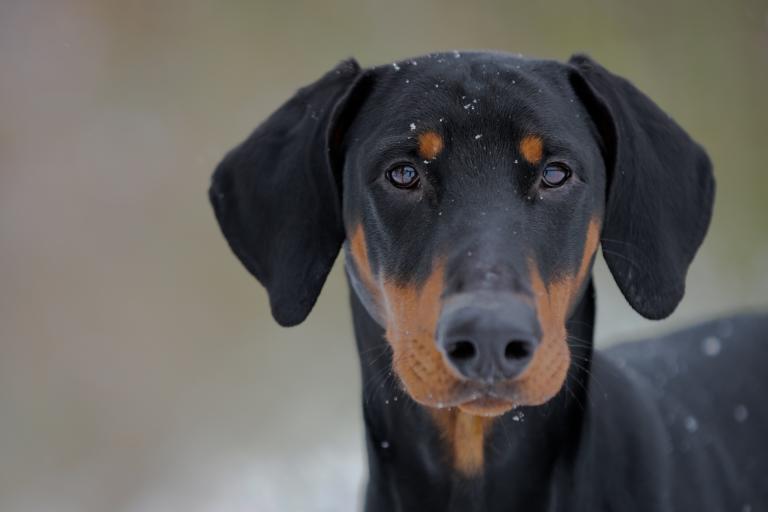Von-Willebrand-Disease Type 1 (VWD1 Dog)
Von Willebrand disease type 1 (VWD1) is a blood coagulation disorder. The Von Willebrand factor plays an important role in blood clotting. If the disease occurs, there is a deficiency of this factor or it is dysfunctional, which causes the affected animals to show symptoms such as intensive and persistent bleeding when injured (e.g. also after operations).
The disease (type 1) occurs in the Doberman. The inheritance is autosomal recessive.
Genetic Test: available in Shop
Symptoms
- Intense and persistent bleeding from injuries (e.g. also after operations).
- Poor wound healing
General Information
- The Von Willebrand factor (VWF) plays an important role in blood coagulation.
- A low concentration of VWF or defects in it lead to an increased risk of bleeding from even minor injuries.
- There are three different types of Von Willebrand disease in different breeds of dogs.
- VWD1 is less severe than types 2 and 3.
Test Information
This mutation test shows the change of a single base pair (c.7437G>A) in exon 43 of the VWF gene.
Test in Shop
Also in the Doberman 1 package
Genotype and Lab Report
Inheritance: autosomal recessive
→ The disease only occurs when both alleles of the gene are affected by the mutation (vwd1/vwd1). Dogs that have only one allele with the causative mutation (N/vwd1) are clinically healthy carriers.
Genotypes:
N/N = genetically normal
The dog has no variants for VWD1 and thus cannot pass it on to offspring.
N/vwd1 = a carrier
The dog is a clinically healthy carrier. The variation is passed on 50% to the offspring, which are also carriers.
vwd1/vwd1 = affected
The variation will be passed on to 100% to the offspring, which will be carriers or affected.
Recommendations
- Carrier animals can be bred to normal animals (N/vwd1 x N/N). Before using the offspring in breeding, it should be tested whether they are normal or carriers.
- Mating two carrier animals (N/vwd1 x N/vwd1) should be avoided because there is a 25% chance that the offspring will be affected.
- Affected animals (vwd1/vwd1) should be excluded from breeding.
Literature
Gentilini, F., Turba, M.E. : Two novel real-time PCR methods for genotyping the von Willebrand disease type I mutation in Doberman Pinscher dogs. Vet J 197:457-60, 2013. Pubmed reference: 23911791. DOI: 10.1016/j.tvjl.2013.02.023.
Nichols, T.C., Hough, C., Agersø, H., Ezban, M., Lillicrap, D. : Canine models of inherited bleeding disorders in the development of coagulation assays, novel protein replacement and gene therapies. J Thromb Haemost 14:894-905, 2016. Pubmed reference: 26924758. DOI: 10.1111/jth.13301.
Further information is available at: Online Mendelian Inheritance in Animals.

